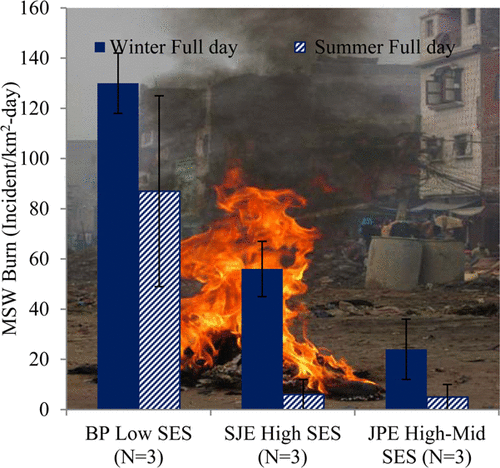
Characterizing the Spatial and Temporal Patterns of Open-burning of Municipal Solid Waste (MSW) in Indian Cities
Type
Open-burning of municipal solid waste (MSW) is a major source of PM emissions in developing world cities, but few studies have characterized this phenomenon at the city and intracity (neighborhood) scale relevant to human health impacts. This paper develops a consistent field method for measuring the spatial frequency of the incidence of MSW-burning and presents results in three neighborhoods of varying socioeconomic status (SES) in Delhi, India, observed in winter and summer over 2 years. Daily MSW-burning incidents ranged from 24 to 130/km2-day during winter and 5–87/km2-day during summer, with the highest intensity in low SES neighborhoods. Distinct seasonal and diurnal patterns are observed. The daily mass of MSW-burned was also estimated at 90–1170 kg/km2-day and 13–1100 kg/km2-day in highest to low SES neighborhoods, in winter and summer, respectively. The scaled-up estimate of total MSW-burned for Delhi city ranged from 190 to 246 tons/day, about 2%–3% of total generated MSW; morning-burning contributed >65% of the total. MSW composition varied systematically across neighborhoods and season. Agra had much higher MSW-burning (39–202 incidents/km2-day; 672–3485 kg/km2-day) in the summer. The field method thus captures differences in MSW-burning across cities, neighborhoods, diurnally and seasonally, important for more fine grained air pollution modeling, and for tracking/monitoring policy effectiveness on-ground.

